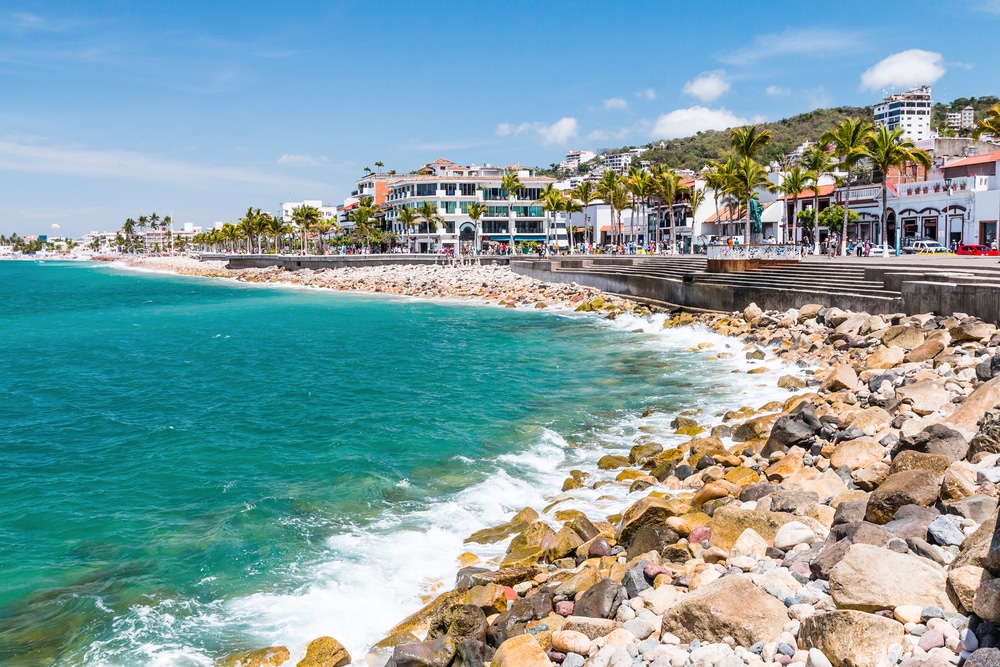
Beginning in the north at Hotel Rosita the Malecón is a 12-block, 870-metre oceanfront esplanade leading down to the Zona Romántica.
Nearly all of the palm-edged Malecón is free of road traffic and is constantly being furnished with new public art, plants and benches.
The vistas of the Bahía de Banderas a joy, not least when the sun is going down behind the bay in the evening.
Since the early 2000s the Zona Romántica, south of the Río Cuale, has become one of Latin America’s biggest LGBT escapes.
A curious thing about this remarkably green pocket of the city is that even though it’s newer than Puerto Vallarta’s downtown, the Zona Romántica feels more like a traditional Mexican pueblo.
On its latticework of cobblestone streets are quaint bakeries, cafes, scores of restaurants, a helping of art galleries and an easy-going atmosphere in high season.
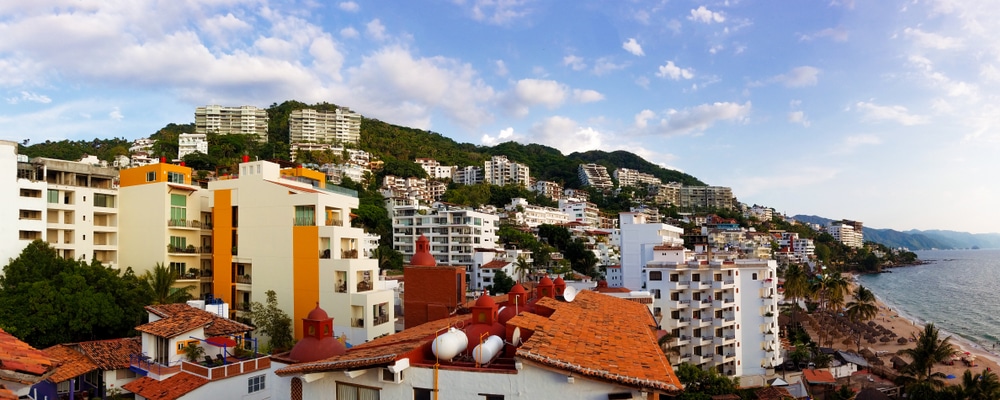
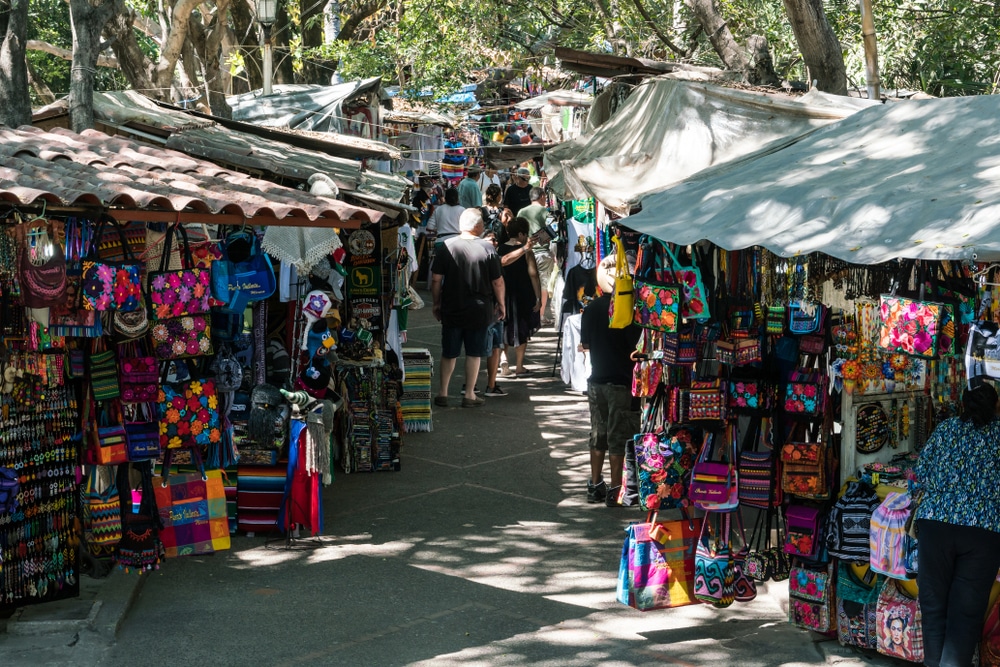
In 1926 the Río Cuale swelled and forked into two branches, leaving a new island in the middle.
This was completely separated from the rest of the city in the 70s when the riverbed was dredged.
In the intervening years the Isla Cuale only has been sparsely built up and is a lush sanctuary at the boundary between the Zona Romántica and the downtown.
There are a few places to eat, and a continuous line of open-air stalls selling souvenirs.
Some distance from Puerto Vallarta, these botanical gardens are a whole day out.
Founded in the early 2000s, the attraction is in 26 hectares, a tapestry of native forest and manicured gardens planted with species from the Puerto Vallarta region and tropical zones around the world.
One of its main aims is to conserve orchids, and these mesmerising flowers show up across the gardens and are grown in a dedicated orchid house.
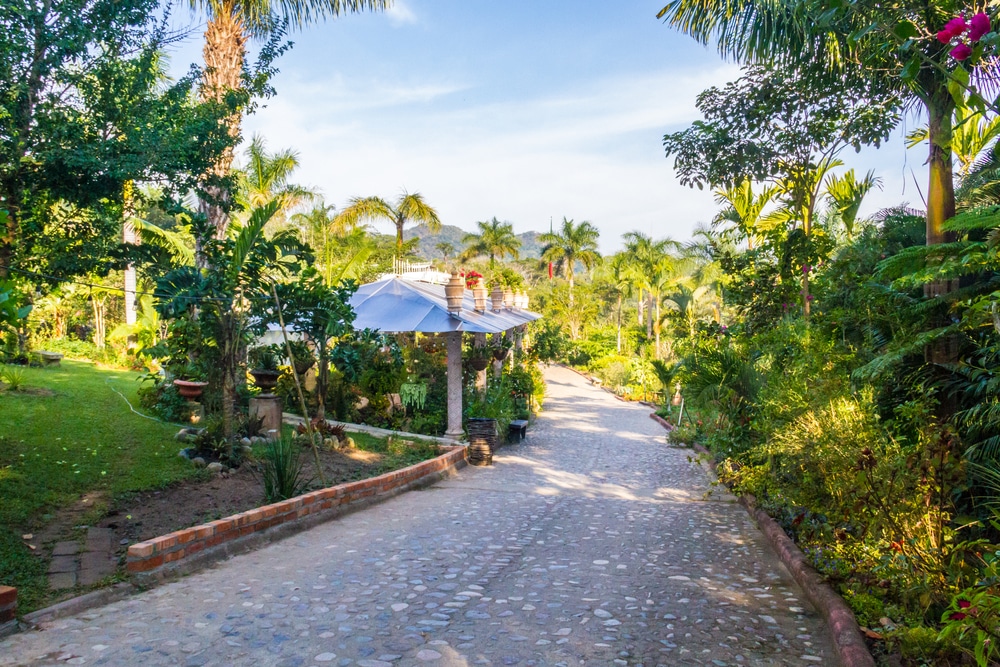
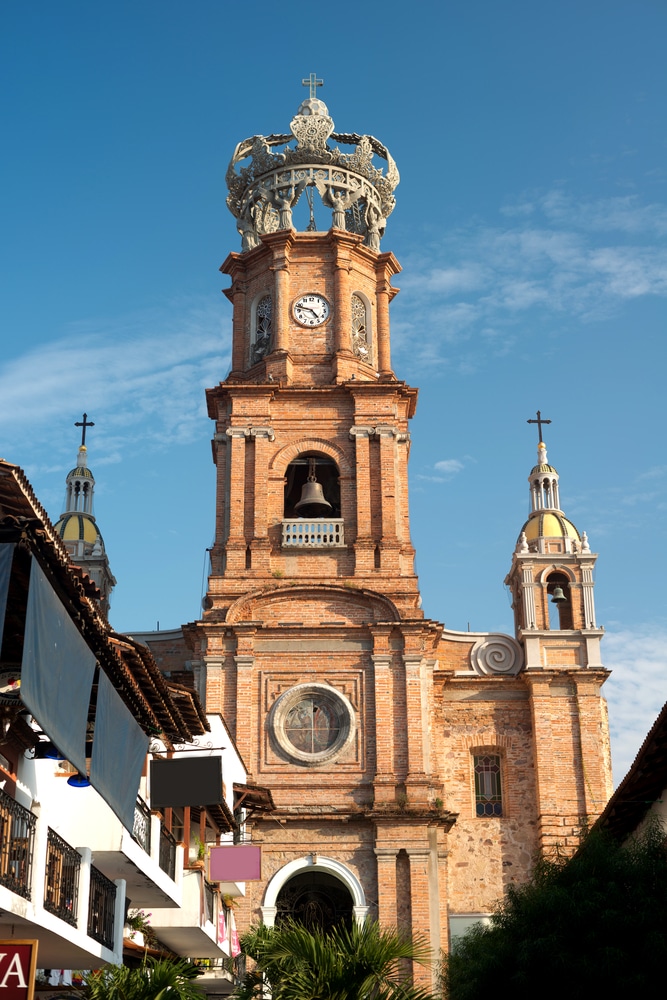
Although you wouldn’t tell to see it, this landmark in the middle of the Zona Romántica is less than a century old.
Construction took place in a tempestuous period and had to be stopped during the Cristero War that engulfed central-western Mexican states in the late-1920s.
The church has also been affected by natural events, and the iconic crown atop the main tower had to be replaced after a storm in the 2000s.
A new monument for Puerto Vallarta’s oceanfront, Los Muertos Pier is on the beach of the same name, which we’ll talk about below.
This can be seen for miles for its tall sail-shaped frame, and is photo-worthy at night when bathed in blue light.
The pier is also the embarkation point for water taxis shuttling off to other parts of the city and the beaches in the south.
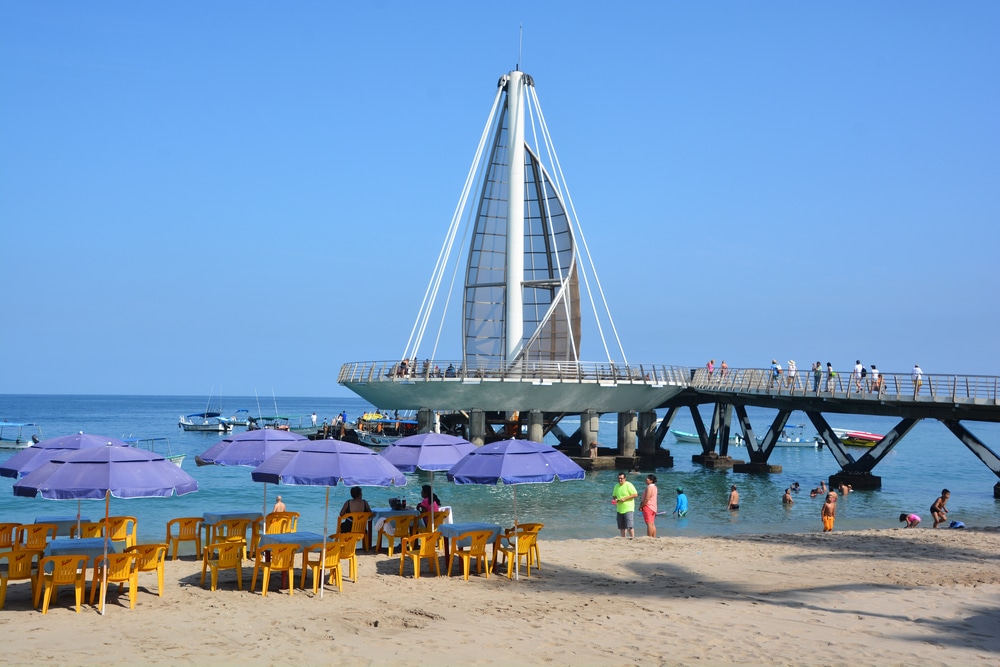
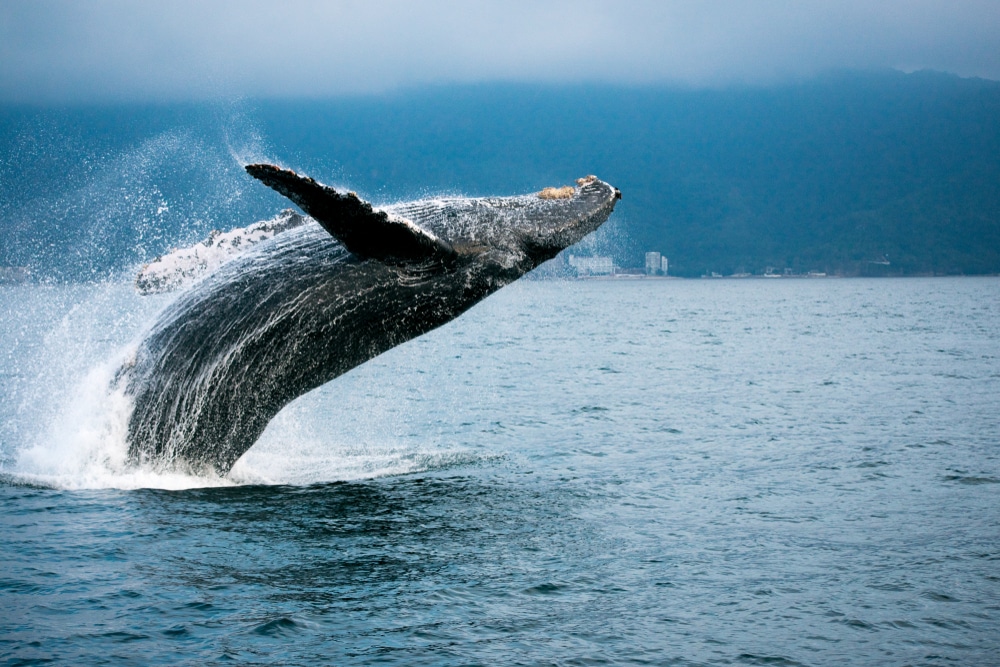
During the winter in the northern hemisphere humpback whales migrate down Mexico’s pacific coast to give birth to calves.
This species is here from December to February, spending a few weeks in these warmer climes before making the journey back up to Alaska.
A whole directory of businesses in the resort arranges whale-spotting tours: Some trips are led by oceanographers and marine biologists who will share interesting titbits and will know how to conduct an expedition in a humane way.